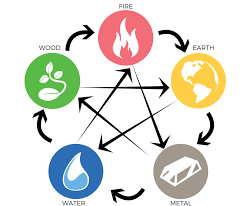Prakriti Analysis
 Prakriti, often translated as “nature” or “matter,” is the primordial substance from which the entire universe arises according to Hindu cosmology. It is the dynamic, ever-changing force that underlies all material existence. Within the Samkhya school of philosophy, Prakriti is considered to be the primal cause of creation, existing independently of consciousness (Purusha) yet interacting with it to bring forth the manifested world.
Prakriti, often translated as “nature” or “matter,” is the primordial substance from which the entire universe arises according to Hindu cosmology. It is the dynamic, ever-changing force that underlies all material existence. Within the Samkhya school of philosophy, Prakriti is considered to be the primal cause of creation, existing independently of consciousness (Purusha) yet interacting with it to bring forth the manifested world.
Prakriti is characterized by its inherent qualities or gunas: Sattva (purity, harmony), Rajas (activity, passion), and Tamas (inertia, darkness). These gunas interact and combine in various proportions, influencing the nature of all phenomena in the material realm. For example, a predominance of Sattva leads to clarity and enlightenment, while an excess of Rajas or Tamas can result in attachment and ignorance, respectively.
Furthermore, Prakriti is often depicted as comprising the five elements (panchabhutas) – earth, water, fire, air, and space – which form the basic building blocks of the physical universe. These elements combine and interact in complex ways to create the myriad forms and experiences we encounter in the world.
In summary, Prakriti represents the dynamic, multifaceted nature of the material world in Hindu philosophy, encompassing elemental composition, qualitative attributes, and the fundamental processes of creation and manifestation. Its understanding is central to comprehending the cyclical nature of existence, the interplay of forces shaping our reality, and the path to spiritual liberation.